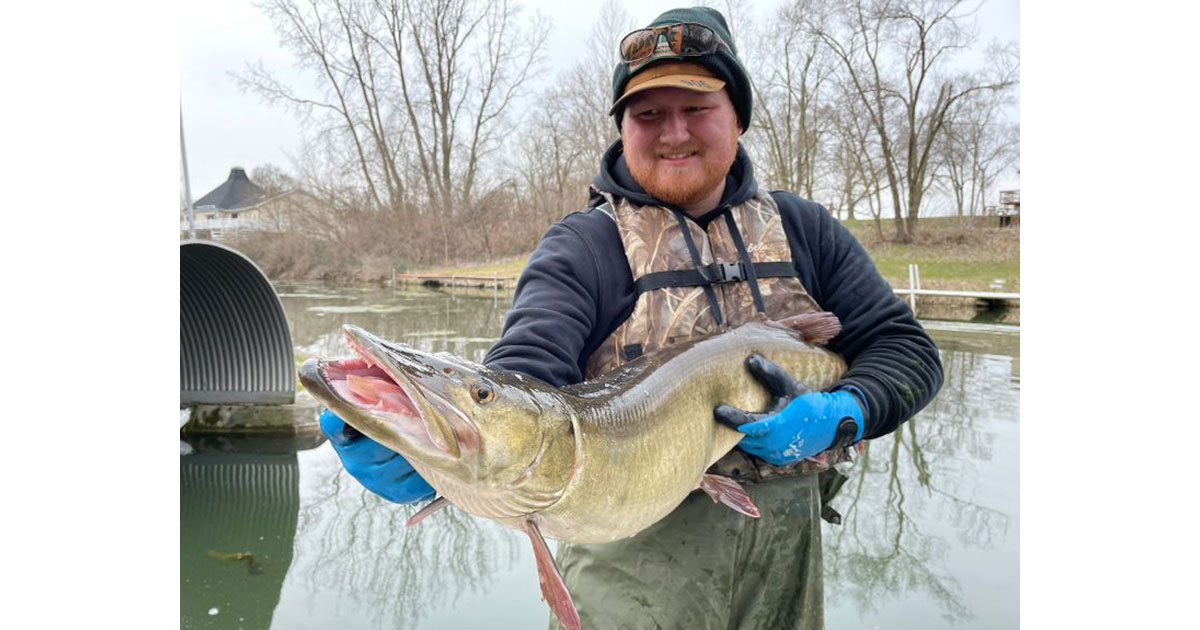- Details
IDNR Report
Indiana’s Natural Resources Commission (NRC) has opened a public comment period for proposed changes to the state’s river otter trapping rules before its members vote on their final adoption. If adopted, the changes would take effect this November, in time for river otter trapping season.
Public comments can be submitted online at IN.gov/nrc/rules/rulemaking-docket by locating the “Submit Comments Here” link in the Rulemaking Docket for the River Otter Trapping Rule. Comments can also be mailed to:
- Details
SJRVFF Report
The St. Joseph River Valley Fly Fishers (SJRVFF) will be once again be teaching its popular and informative “Beginning Fly Tying Class.”
SJRVFF will conduct a seven-week class designed to familiarize the tier with tools, materials, techniques and tying proven fly patterns for the local area and beyond.
Classes will be held once a week, on Thursday evenings for seven weeks starting on March 14th, 2024, and ending on April 25th, 2024.
Class will start at 6:30 pm and will be held at the Near Northwest Neighborhood Community space located at 1013 Portage Ave. South Bend, Ind. 46616. This is a beginning class, so no experience is necessary.
The cost for non-members of St. Joseph River Valley Fly Fishers (SJRVFF) is $40.00 and for members of SJRVFF and $10 for members. The class is limited to 20 people.
SJRVFF will supply all tools, vise, material, syllabus and in-person instruction. If you have your own vise, tools, and light, please feel free to bring them and use them for the class.
You can register and pay for the class at www.sjrvff.com under the “News and Updates" tab.
- Details
By Louie Stout
 Ethan Binkowski
Ethan Binkowski
Meet Ethan Binkowski, the new DNR District 3 assistant fisheries biologist for much of northeastern Indiana.
Binkowski, 27, will assist District Biologist Tyler DeLauder with various fish surveys and other fisheries projects.
This is good news because the DNR finally approved assistant biologists for each district. Northern Indiana district biologists have been operating without assistants since 2019.
“Having another fulltime person means we can do more surveys, get more work done and be more efficient,” said DeLauder. “It will be nice having another fulltime biologist and do the work we were dong before we lost those positions.” Binkowski, who grew up in the Lansing, Mich. area, graduated from Lake Superior Stat e University before working with the Michigan and Ohio DNRs and landing the job in Indiana.
He’s worked various projects in the Great Lakes and while in Ohio, he did research work on perch, walleye and white bass. He has worked as an Indiana assistant research biologist since hiring on with the Indiana in 2023.
The District Three covers northeastern fisheries from south of Angola to Randolph County and includes all of the Kosciusko County lakes east and the Missisinewa, Salamonie and Huntington Reservoirs.
We’ll provide details of more northern Indiana assistant fisheries biologist appointments as they are announced.
- Details
IDNR Report
Your latest guides to exploring Indiana’s great outdoors are now available at your fingertips and at a DNR property near you.
The 2024 Indiana Recreation Guide is available now at on.IN.gov/recguide and your 2024-2025 Indiana Fishing Regulations Guide is available at on.IN.gov/fishingguide.
The DNR’s 2024 Indiana Recreation Guide is the source for information on state parks, state forests, lakes, fish & wildlife areas, nature preserves, state park inns, and other DNR properties. The guide includes a great facilities chart and information about accessibility and fees.
Soon, free printed copies of each will be available at local retail outlets, state parks, lakes and other DNR properties.
- Details
IDNR Report
Indiana Conservation Officer Nathan Cooper, who serves Steuben County, has been selected as 2023 District 2 Officer of the Year.
Cooper has served as a conservation officer for five years. He served in Blackford County before transferring to Steuben County, where he has served since 2021.
In addition to his normal duties as a field officer, Cooper serves as a field training officer, breath test operator, and sonar operator.
District 2 includes Adams, Allen, DeKalb, Huntington, LaGrange, Noble, Steuben, Wells, and Whitley counties.
The district award puts Cooper in the running for the Pitzer Award, which is presented to the top overall conservation officer in the state and is selected from the 10 district winners.
The Pitzer Award is named after Conservation Officer James D. Pitzer, who was fatally shot while investigating illegal hunting activity on Jan. 2, 1961, in Jay County.


